In a battle for survival, coral reefs get a second chance outside the ocean
ORLANDO, Florida – Simulated moonlight. Perfect temperatures. A hum of bubbling saltwater.
A team of marine biologists had done everything they could to set the stage for something akin to a romantic evening for a tank full of coral. As the anticipated hour arrived at the Florida Coral Rescue Center, the team hoped its efforts would induce the corals to spawn.
They did not disappoint. Over several evenings, more than 75% of the Center's brain coral colonies reproduced, creating nearly a half-million larvae.
In the ocean, fertilized larvae float for days or weeks before settling down to start life as a stone-producing member of society on the sea floor. These were scooped up for delivery to other restoration and research facilities, where they represent hope for the future of coral reefs in Florida and the Caribbean.
“What we're doing here is basically preventing against extinction,” said Justin Zimmerman, a marine biologist at SeaWorld Orlando who oversees the rescue center and a recently added coral center in the theme park that simulates underwater conditions in the Florida Keys.
He's one of a cadre of marine biologists and scientists in dozens of organizations trying to preserve corals, more threatened than ever by disastrous marine heat waves and a deadly disease. The groups grow corals, preserve threatened and endangered species and build gene banks.
Reefs in Florida and the Caribbean struggled for years with pollution and rising temperatures. Then stony coral tissue loss disease arrived in 2014, decimating corals in a deadly wave along Florida's reefs. Over the past year, the reefs and Australia's Great Barrier Reef suffered massive losses during a global mass bleaching event brought on by record-setting marine heat waves.
Corals, such as those under the coral center’s care, rescued as the disease advanced toward the southern end of the Keys, now hold the future in their gently waving polyps.
In a non-descript industrial complex, the center's large fiberglass aquariums each hold coral ecosystems, complete with small fish that provide critical nutrients, urchins and other sea life to simulate life underwater. A partnership among SeaWorld, Disney, the Florida Wildlife Foundation and others, the center houses 18 species in 524 corals. The Association of Zoos and Aquariums oversees a consortium that discusses coral care in a weekly teleconference.
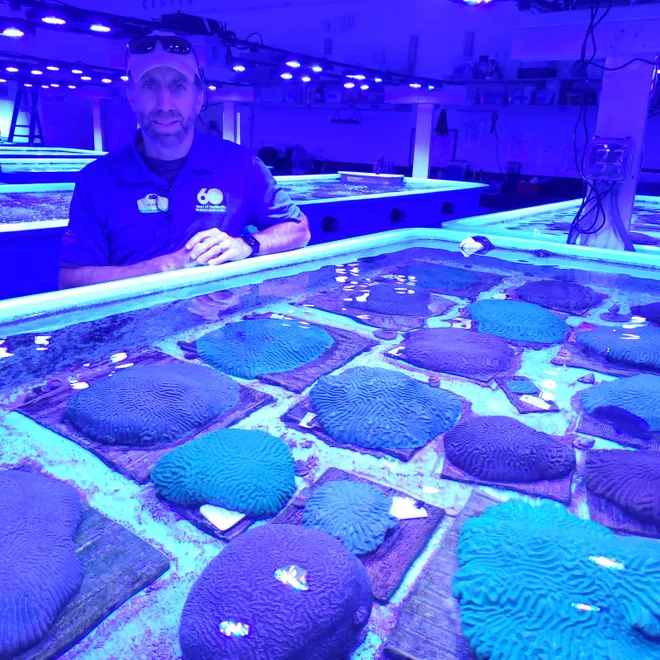
They are among more than 30 organizations working with the Florida Fish and Wildlife Conservation Commission and National Oceanic and Atmospheric Administration to save the reefs that stretch more than 300 miles from north of Miami to the Dry Tortugas. Some propagate corals. Some transplant corals into ocean nurseries. Others tackle complex questions about genetics, cryopreservation and chemistry.
Together, they hope to one day produce enough healthy and genetically diverse corals to restore the reefs, if the rise in ocean temperatures can be stopped.
A 'most complicated animal'
Globally, scientists are trying to unravel the mysteries of these creatures that form one of the planet’s most productive ecosystems. Corals cover about 1% of the world's sea floors, but support more than 25% of marine life in the oceans.
Andy Stamper, Disney Conservation Science manager, has been a Disney veterinarian for years, at Animal Kingdom and at Living Seas in Epcot. Standing in the rescue center surrounded by corals, Stamper said they are "the most complicated animal I’ve ever come across.”
“They’re animal, vegetable and mineral, but then they also depend on bacteria, fungus and protozoa,” he said. “All of these organisms need to work together to make a healthy coral polyp.”
He sees parallels between the coral communities and the human collaboration needed to save them.
Rescue center staff learned to simulate natural periods of sunlight and moonlight with multi-colored LED lights, and now spawning cycles are “very predictable,” Zimmerman said.
Most spawning corals release bundles of eggs that resemble Dippin’ Dots ice cream. Surrounded by sperm inside a mucus shell, the pink bundles are no bigger than a piece of quinoa, Zimmerman said. The shell dissolves when bundles float to the surface, the sperm swim to find eggs from other colonies and fertilized eggs become larvae.
By early September, three other reef-building coral species had spawned – boulder coral, boulder star coral and mountainous star coral, he said. "It’s very exciting to have all these years’ worth of work all come down to watching these corals do their thing."
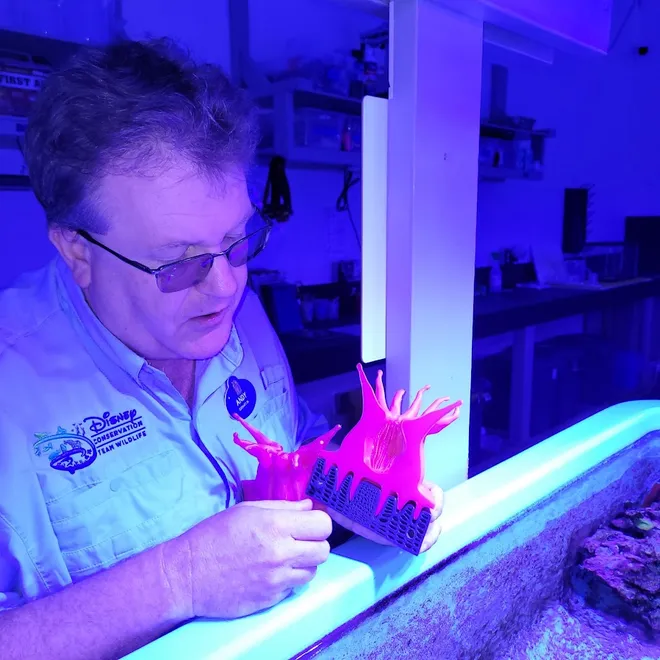
Propagating and replanting corals
Coral science has advanced by leaps and bounds since Ken Nedimyer, who some consider the father of coral restoration, discovered how to farm corals in the Keys more than two decades ago, Stamper said.
Research projects range from high-tech and “really cool, sexy science” to the simplest of techniques volunteers can use, said Jessica Levy, director of restoration strategy at the Coral Restoration Foundation.
The Foundation enlists volunteers in Florida and the Caribbean to attach coral fragments to manufactured underwater “coral trees” and place them in coral nurseries along reefs.
They work with more than 20 species of coral, with a goal of “low-cost, high-reward projects” that get communities involved, Levy said. “The more diversity you have, the more resilience you have in your restoration efforts, because these corals, even within a single species, respond differently to different stress events.”
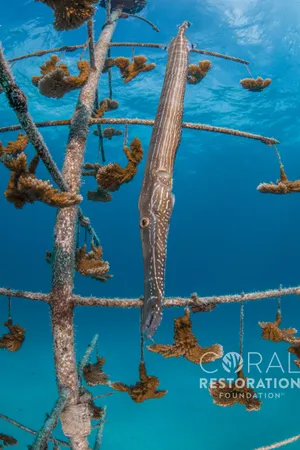
Crossbreeding and cryopreservation
In the wild, Atlantic pillar corals suffered a 97% decline in Florida between 2015-2024, primarily from the stony coral disease. Only an estimated 24 living pillar coral colonies remain along the Keys.
The Florida Aquarium, which also spawns coral, is home to 170 endangered pillar coral colonies. Working with a team of international experts, they are developing cryopreservation techniques to preserve coral larvae in liquid nitrogen in a frozen but alive state.
If they can successfully raise larvae that have been frozen and thawed, it would be the first time scientists have cryogenically preserved coral larvae, then raised them, the aquarium said. If successful, larvae could be thawed decades or centuries from now.
The Aquarium, the University of Miami’s Rosenstiel School and Mote Marine Laboratory are all working to crossbreed corals, especially the federally threatened elkhorn and staghorn corals, and produce genetically enhanced corals more resilient to heat and disease.
NOAA, the aquarium and dozens of other organizations also work with Secore International, a nonprofit dedicated to reef restoration that provides training on how to do sexual coral propagation.
Once the coral larvae are produced, the challenge is getting them to settle. Amy Wagoner Johnson, a professor at the University of Illinois’ Grainger College of Engineering, spearheads an international research collaboration to find design materials to make the ideal surface to attract and enhance the settling of coral larvae. She and colleagues take materials down to Curaçao's CARMABI research station for introduction to larvae.
The manufactured surface material is mortar-like, with additives that tweak the composition, then pressure-treated to carbonate and harden the materials, she said. When submerged in seawater, the substrates release ions that coral seem to respond to.
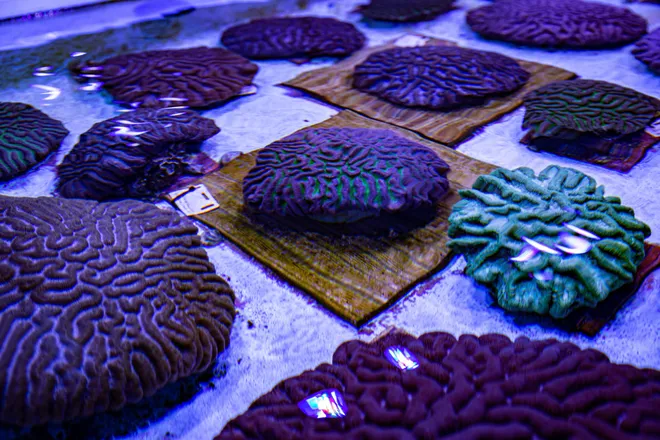
Why are corals important?
Reefs are a major part of the ocean food web, with nooks and crannies filled with worms, shrimps and other creatures. They provide habitat for fish that people rely on for food, they contribute millions to local tourism economies and provide important coastal protection from high waves during storms.
Corals “underpin a way of life and are critical for millions around the world," said Alice Grainger, senior director of creative development for the restoration foundation.
"Even if we take a hit like we did last year, we can't abandon the communities that that rely on these ecosystems for their livelihoods and their and their way of life," she said. “If we lose these ecosystems, we see these coastal communities collapsing as well."
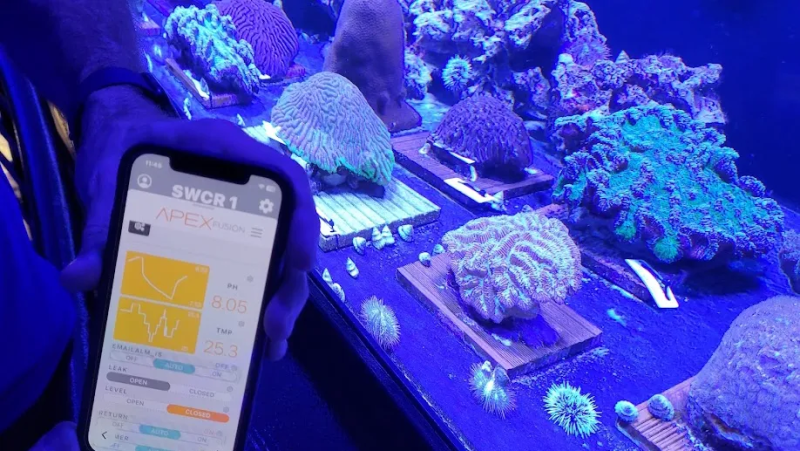
What causes coral bleaching?
The reason corals serve as oases on the ocean floor is their relationship with the symbiotic algae, known as zooxanthellae, that live inside the polyps. The algae provides the rainbow of colors coral are known for, using energy from sunlight to create building blocks of sugars and proteins, and they help the corals remove waste.
When water temperatures remain above 90 degrees for too long, the algae get stressed and release toxic byproducts, Stamper said. Then the coral polyps kick out the offending algae, and only the clear polyps and white limestone structures they’ve built remain, producing the “bleaching” effect.
What's the future of coral restoration?
Protecting and restoring coral reefs is “a really complicated problem,” said Wagoner Johnson. "But it's far too early to give up hope."
The most important thing about the critical projects underway is the science being developed and how that will help buy time for coral restoration, said Bill Precht, a Miami-based scientist who wrote the first book on coral restoration in 2006.
“We’ve made lightyears of adjustment and progress," Precht said. "Because of future advances in microbiology and genetics, we’re going to able to do things we can’t even imagine now.”
Precht and others question whether it’s futile to continue out-planting corals on the reef while climate change and greenhouse gas emissions still drive dramatic spikes in ocean temperatures. Even if humans do get a grip on global climate change, he fears it could take 50 to 100 years to bring ocean temperatures down enough for corals to thrive again.
Like the collaborative ecosystems corals thrive in, Stamper said it’s going to take humans and all of these organizations “working together to bring these corals back." With our help, he said, “if any animal can do it, the corals can.”
Dinah Voyles Pulver, a national correspondent for USA TODAY, has covered climate change, wildlife and the environment for decades. Reach her at dpulver@gannett.com or @dinahvp.
Disclaimer: The copyright of this article belongs to the original author. Reposting this article is solely for the purpose of information dissemination and does not constitute any investment advice. If there is any infringement, please contact us immediately. We will make corrections or deletions as necessary. Thank you.






